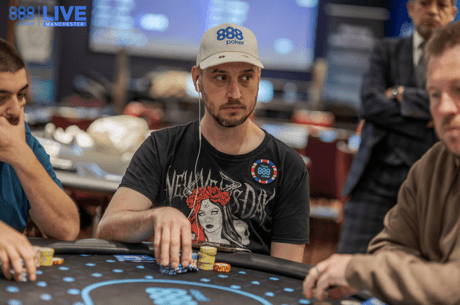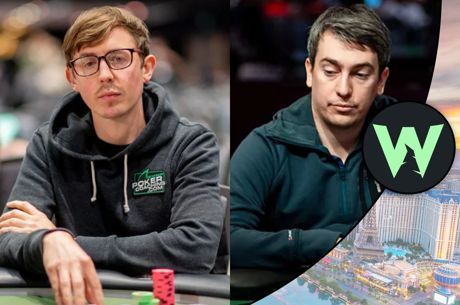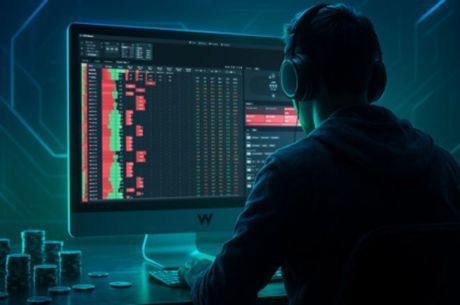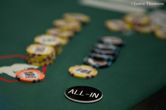Value Betting a Set on a Tricky Board
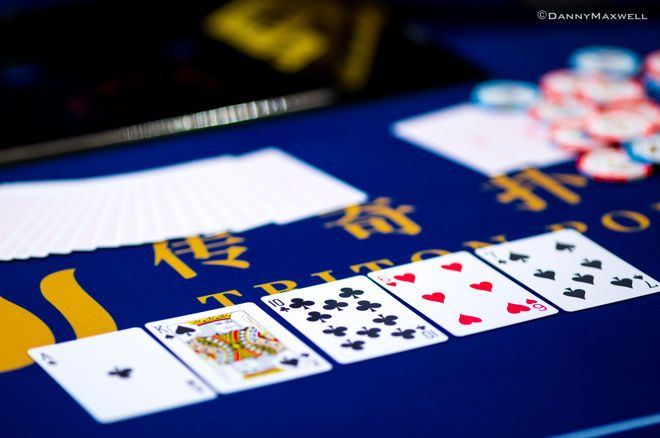
Sometimes it seems like the board can run out all wrong when we hold a set. What was once a dreamlike sequence turns into a nightmare imposed on us as penance for all our previous poker misdeeds.
But if we have the benefit of position, our opponent(s) might still give us an easy route and check to us on the river. Then we have options to consider. We can take the chance at checking behind and seeing if our hand rates best. We can attempt to value bet despite the obvious danger. Or we can even bluff and try to fold out better hands (always a possibility on scary boards).
Let's take a look at an example of just such a situation that took place during an online poker tournament, a $50 buy-in no-limit hold'em, six-max freezeout.
Flopping a Set
The hand took place just about 10 minutes after the tournament started, with everyone still sitting with something close to the 100-big blind starting stacks.
Our hero gets dealt 9♠9♣ in middle position and faces an under the-gun raise to 3 big blinds from a weak, inexperienced player. Three-betting, though helping to ensure the pot gets heads-up with a weaker opponent, is an option here, but shouldn't be seen as mandatory. Our hand is unhappy to face a four-bet and can manage well in multi-way pots.
Hero just calls the raise, and a very good regular calls as well from the big blind. The flop comes 10♦9♦8♣ and it checks to us.
Now in this situation, betting is clearly mandatory. We have a strong but vulnerable hand and there is a ton of value to be had. The big blind might lead out with some hands that beat us and the initial raiser would almost certainly bet any hand that beats ours. But they both can have plenty of hands that can continue facing a bet. In this case, our hero bet two-thirds pot and was called in both spots.
Before we talk about the turn, let's think about what hands we can rule out. This spot is interesting because we can probably say that it is highly unlikely either of our opponents ever has a better hand than ours on the flop. So no top set and no straights.
Pocket eights is not guaranteed to check-raise this flop every time from the big blind, nor is bottom two pair or any two pair really, but obviously the stronger the two pair, the more likely it is to check-raise. However, given the big blind is very good and stacks are very deep, he might elect just to call the flop with his stronger hands to keep the weaker player in and to see how this dangerous board develops.
The Worst Turn in the World
The turn is the Q♦, meaning the flush draw comes in and any jack makes a straight. Both players check to our hero holding his 9♠9♣. Should we bet?
On the one hand, we are quite deep and have position. Even if we get check-raised, we will have room to call the raise and try to fill up on the river. And do we really expect a straight to check-raise, anyway, on this card?
Indeed, our chance of being check-raised is probably lower than at first glance on this card. We can bet and check behind on the river, having value bet hands like A♦Qx, Qx10x, K♦Qx, A♦10x, and Qx9x while getting our chance to draw out against JxXx.
On the other hand, we are facing two opponents, increasing the likelihood at least one of them has us beat. Meanwhile if we bet they might just release a hand like KxQx without a diamond or 10x7x that has equity but does not pose a risk of shutting us out of the pot on the river.
While the ability of calling a turn raise makes betting appealing, we also keep our range uncapped since we would always barrel with the nut flush or KxJx. In this instance our hero checked back.
Bet Thinly or Check Meekly?
The river is the 4♣, making the final board 10♦9♦8♣Q♦4♣. Both players check to us.
On the one hand, it seems like we have the best hand. Any jack should be confident enough to bet the river after the turn checked through. Consider the fact that stacks are still deep. Would not either player have led the river with a value hand, wanting to get money into the pot? It seems like we would have certainly heard from a flush or KxJx by now, so we have to consider only bare JxXx possibly taking a passive line.
The initial raiser, the weak player, did take a passive line throughout the hand, so certainly could have checked the river with Jx10x. Additionally, the big blind is a very good player and is unlikely to be tempted to call on the river with a hand as strong as Qx10x. He could even turn A♦10x into a bluff and push us out of the pot.
Everything is Player Dependent
In this exact spot, the big blind will probably never call with a worse hand. He will call with better, fold worse, and raise better and worse, putting our exact hand in a bind.
That means if we do bet, we are value betting versus the weaker player in the pot. While we have the best hand often, the fact remains we have to be a favorite against calling ranges, not the ranges with which our opponents' check to us. Our hand also blocks some of the combinations we wish most to value bet, such as Qx9x, 9x8x, and 10x9x. Were we facing a different big blind, perhaps we could go for it.
Our hero ultimately chose to check behind and saw 10♥8♥ in the big blind's hand and A♣K♠ in the initial raiser's.
The showdown is not definitive, but illustrates some of the problems with our river spot. When we are checked to we are best often. But when we bet, better hands will fold.
![[com] myKONAMI Slots Welcome Offer Sep 10 wallpaper](https://pnimg.net/w/a/2/68c/14dd211071.jpg)

![[us-] PokerStars US NAPT for ALL US 728x90 June 25 - 12](https://pnimg.net/w/a/2/685/bb2d8af470.jpg)





